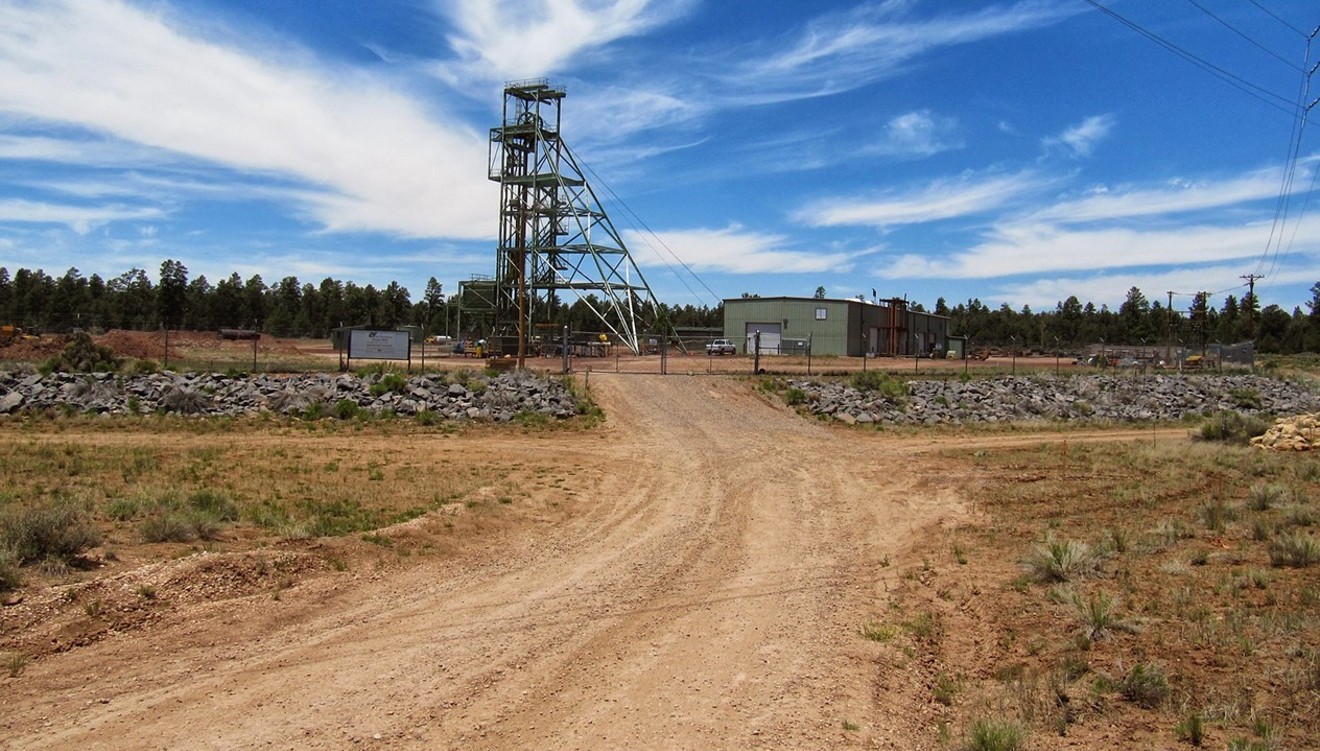Environmentalists celebrated its passage with caution. The bill currently lacks companion legislation in the Senate, where the odds of such a bill passing are slim. Meanwhile, a 20-year moratorium on mining near the Grand Canyon, implemented in 2012, is under review by the Trump administration.
In a statement released this week, the White House threatened to veto the bill, should it make it that far.
Original story continues below:
The U.S. House of Representatives is scheduled to vote today on a bill that would permanently ban mining near the Grand Canyon.
But the Western Caucus, a Republican-heavy group of congressional representatives who advocate for policies that ostensibly benefit the West, chaired by Arizona Representative Paul Gosar, is calling it "a ploy to destroy Arizona's mining industry," and making other questionable statements.
The accusation came via Twitter from the caucus's verified account on Tuesday as part of a tweet that began, "FACT CHECK: This bill has nothing to do with protecting the Grand Canyon."
The Grand Canyon Centennial Protection Act, sponsored by Arizona Representative Raúl Grijalva, would ban the mining of uranium and other minerals on some one million acres around the Grand Canyon, solidifying an Obama-era moratorium.???????????????? ????????????????????: This bill has nothing to do with protecting the Grand Canyon. Mining is already prohibited in and around the Canyon, and there is already a buffer zone as well. This is just a ploy to destroy Arizona's mining industry.
— Western Caucus (@westerncaucus) October 29, 2019
The Obama administration had previously implemented a 20-year ban on new mining claims in the area in 2012 due to concerns about groundwater, damage to tribal resources, and views from Grand Canyon National Park.
With heavy industry lobbying under the Trump administration, which declared uranium a "critical mineral," those who favor protecting the Grand Canyon and the Colorado River running through it worry that the 7-year-old ban could be overturned.
"Fossil fuel corporations and their allies in Congress are pushing the president to end that moratorium now, more than a decade ahead of schedule," Grijalva, chair of the House Natural Resources Committee, wrote in an op-ed Tuesday in USA Today.
Besides labeling the bill a "ploy," the Western Caucus also tweeted two photos of the uranium-bearing Hermit Mine in Arizona, declaring, "There is no environmental degradation caused by responsibly mining uranium."
Even if that were true, scientific studies and anecdotal evidence alike indicate that uranium is not always mined responsibly, and that the mines, when depleted, are often abandoned rather than properly cleaned up. Some damage, like radioactive water, is not necessarily visible.
Contrary to the claim of "no environmental degradation," studies indicate that the toxic legacy of uranium mining can, and does, last for decades.
In 2013, the National Park Service found that the aquifer below the Hermit mine contained uranium at a concentration 12,000 times higher than drinking water standards.This is what is left of the Hermit Mine in Arizona. An operational uranium mine during the 1980's, it has since been reclaimed. There is no environmental degradation caused by responsibly mining uranium. pic.twitter.com/aR1eI9xeN6
— Western Caucus (@westerncaucus) October 29, 2019
According to Navajo Nation President Jonathan Nez, the reservation knows of 524 open uranium sites. But 305 of them have no funding for clean-ups, and they remain a public health threat, USA Today reported.
Even the Environmental Protection Agency, which under the Trump administration has rolled back numerous environmentally protective rules, still describes risks of uranium mining to people and the environment.
"Regardless of how uranium is extracted from rock, the processes leave behind radioactive waste," its website explains. "In the past, the waste rock produced by underground and open pit mining was piled up outside the mine. This practice has caused problems, including on Navajo lands where more than half of the small, abandoned uranium mines from the middle of the 20th century and their wastes remain."
Meanwhile, "Wind can blow radioactive dust from the wastes into populated areas and the wastes can contaminate surface water used for drinking. Some sites also have considerable groundwater contamination."
One extensive report, on uranium mining and process in Virginia, found that waste sites can be "significant sources of contamination for thousands of years." It added that the long-term risks of such mining "remain poorly defined."
And that's just the damage to the environment. People in underground mines can be exposed to radon gas, and those who live near abandoned mine areas can be exposed to all sorts of contaminants through water, soil, or other substances.
A spokesperson for Gosar did not respond to a request for comment for this story.











